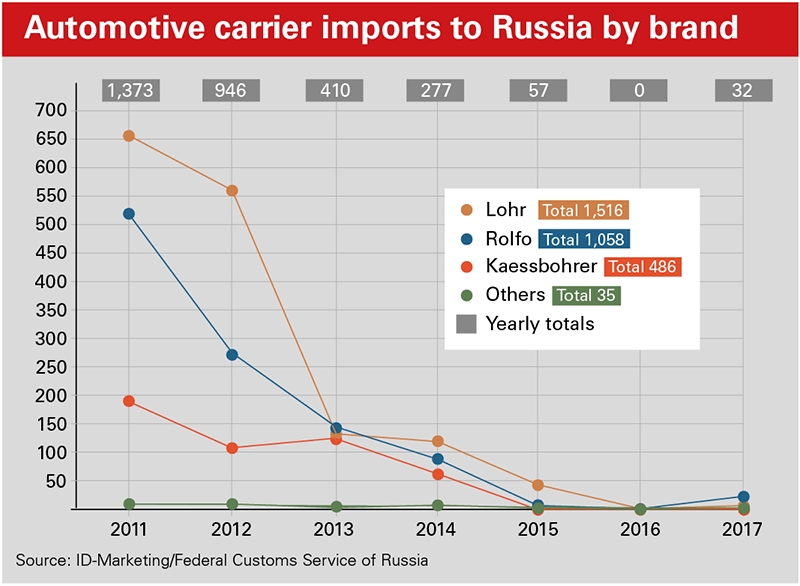Driving into a Russian road block?
Despite economic uncertainty in Russia, analysts expect new vehicle sales to grow further - putting increasing pressure on the nation’s already depleted fleet of car carriers
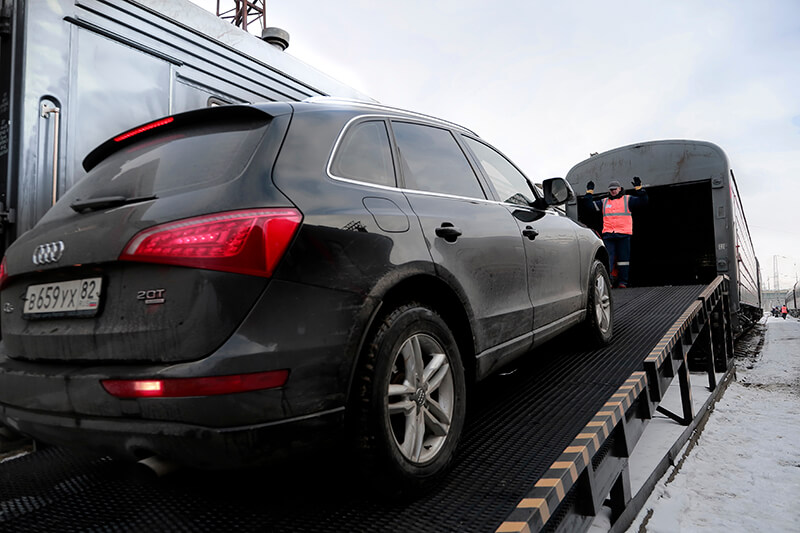 Russia’s automotive industry faces rising taxation, changes to the terms of state support and the threat of further sanctions from the US. Despite this, most analysts believe finished vehicle sales will continue to grow, with rising optimism in the logistics industry.
Russia’s automotive industry faces rising taxation, changes to the terms of state support and the threat of further sanctions from the US. Despite this, most analysts believe finished vehicle sales will continue to grow, with rising optimism in the logistics industry.
In 2019, IHS Markit suggests, new vehicle sales in Russia will grow nearly at the same pace as 2018. The total market, comprising both passenger cars and light commercial vehicles, will increase by more than 16% to exceed 2m units for the first time since 2014, predicts Tatiana Hristova, the analyst’s manager of central and east European light vehicle forecast.
PwC, meanwhile, predicts that Russia’s finished vehicle market will enjoy a compound annual growth rate of around 6% in the next few years, reaching 2.1m units in 2022.
That is a view backed up by Maksim Malkov, senior analyst at KPMG, who says Russia’s domestic market could easily grow that much, given the need to replace older vehicles. However, the continuing introduction of new sanctions against the country and the lack of economic improvement more generally will constrain the growth, he suggests.
Also taking its toll will be the increasingly sophisticated automotive industry in other parts of the Eurasian Economic Union (EEU). Kazakhstan, for example, is gradually reducing finished vehicle imports from Russia as it increases production at its two automotive plants; and new production capacity has also been launched recently in Belarus, with a view to exporting vehicles to Russia.
“On the negative side, there are prolonged sanctions, especially against the banking sector, which could affect credit buying; the reduction in government incentives for car buyers, which helped the market particularly at the beginning of 2018; and the VAT hike, which could affect the market in two ways – directly, through possible car price increases, and indirectly, by boosting inflation and worsening overall consumer sentiment,” Hristova suggests.
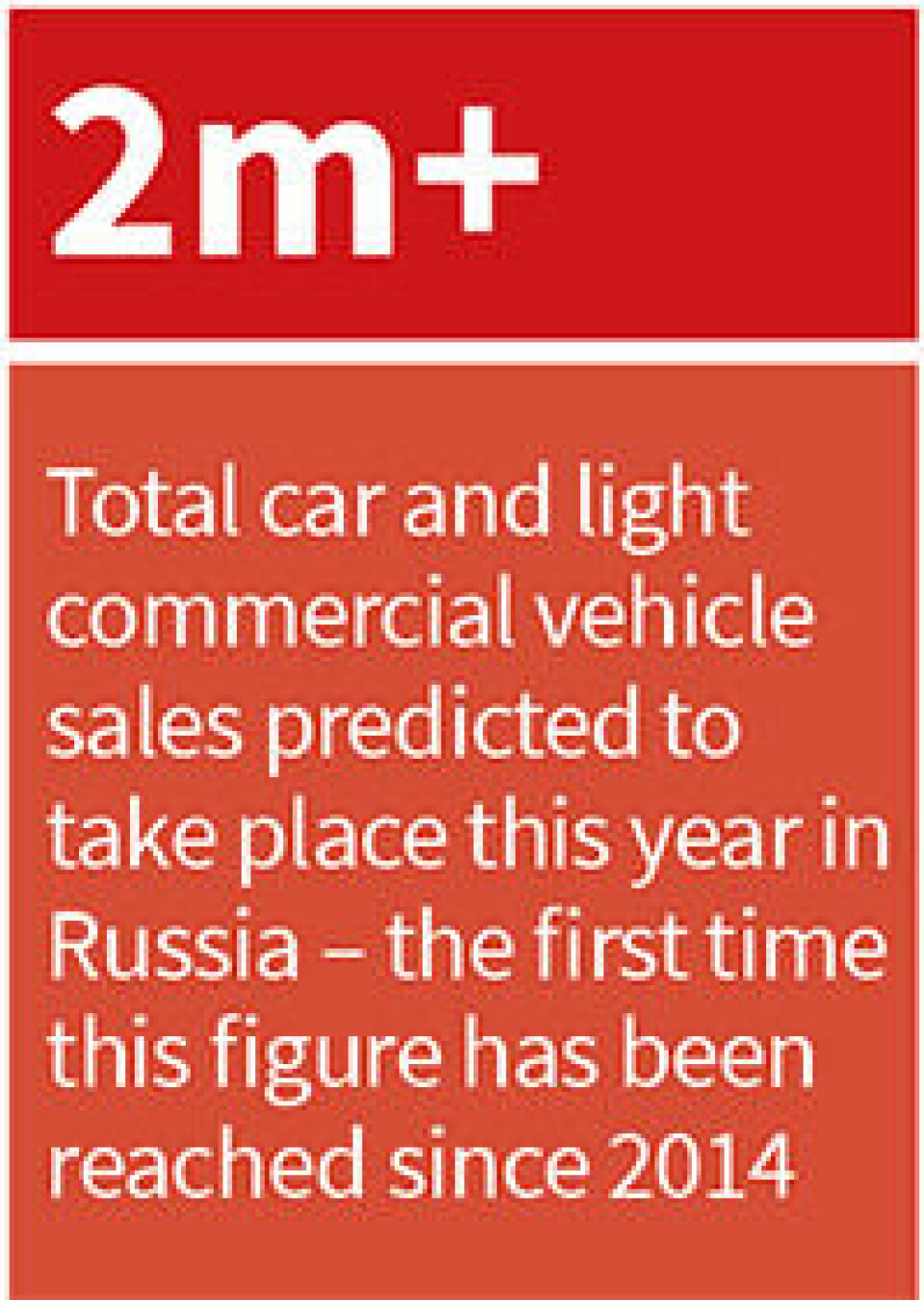
“On the positive side, there is a need to replace the ageing car fleet, which has led to pent-up demand,” she continues. “The Russian market has a renewal cycle of five to six years, so actually the replacement wave from the previous peak should have taken place in 2017-2018. Because of the lacklustre economy, however, this has been postponed. And last, but not least, we expect much higher oil prices – above the critical level of $80/barrel – and this will support the rebound of both the economy and the automotive market.”
Time to invest?
The ongoing recovery in the finished vehicle market has begun to stimulate fresh investment by transport companies in new car transporter equipment, a process which is set to gain greater momentum in the coming years.
“The situation with investment in fleet renewal remains critical,” confirms Vladimir Abramov, finished vehicle logistics fleet manager at Gefco Russia. “All the capacities taken out of the business [in previous years] have been put back into operation now. Car transporters and semi-trailers from producer stocks have also been put into operation. But new capacity has not been put into the industry. The average age of automotive carriers’ fleets is steadily moving towards ten years. Some customers have been forced to remove [their] restrictions on the use of trucks more than ten years old as a result, although this was previously taboo.”
When the domestic automotive market reached its last sales peak of 2.5m units a year, there were 8,000 automotive carriers operating in the country, Russian transport company Avtotechnoimport estimates. But as sales slumped to 1.6m units in 2015, 2,000 trucks or more were taken out of operation.
Russian transport companies imported 32 automotive carriers in 2017, Russian consultancy ID-Marketing suggests, citing data from the Federal Customs Service. This is a huge drop from 2011, during which 1,373 automotive carriers were imported. On the other hand, not a single truck was purchased in 2016, so at least transport companies had started to resume investment in new capacity.
“The recovery in finished vehicle sales and the transport market in Russia has had a positive impact on the flow of new investments in the industry,” says Sergey Bobryshev, logistics director at Glovis Russia. “Over the months after the summer production shutdown, we received a series of messages from carriers about their acquisition of new trucks and plans to keep investing in fleet renewal in the near future.”
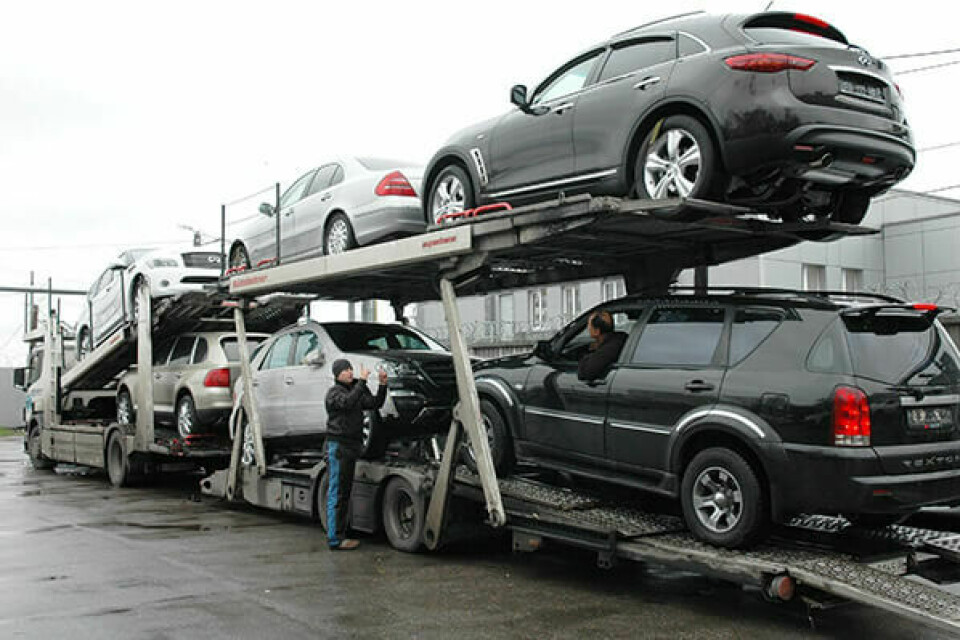
Russia expects a shortage of automotive carriers
High capacity demand
All the major companies in the industry have to renew their fleets, points out Kirill Glukhov, business development manager at Vectura, the Russian branch of Polish finished vehicle logistics provider Adampol. And Vectura is also doing so, he confirms – though without increasing total fleet size.
“While in late 2017 and early 2018 the forecasts were more optimistic, now we should be more cautious in expecting a significant increase in demand for vehicle-carrying capacities,” he says. “It is rather difficult to forecast what will happen with finished vehicle sales in 2019, as this depends on numerous factors.”
Fleet renewal, Glukhov stresses, is only taking place sporadically in the Russian automotive industry for now, and while transport companies put off increasing the number of automotive carriers they run, high demand for existing capacity will remain.
“We have conducted research showing that although there is consistent growth in finished vehicle production in Russia, there is no corresponding growth in carrier capacities. In fact, the number of automotive carriers in operation is shrinking, while finished vehicle production is expected to keep growing,” says Dmitry Sherbakov, CEO of Russian transport company RTL Group. “We expect these trends to meet around mid-2019, at which point the number of trucks in operation will no longer be sufficient to meet demand.”
This capacity problem first reared its head in late 2018, during the seasonal hike in demand for finished vehicles.
A source in the Russian logistics industry, who prefers not be named, agrees that profitability is at the root of the fleet investment problem, as most companies do not make sufficient margin to invest in fleet renewal. The transport industry is now expecting that some temporary rise in demand during 2019 will bring turmoil to the sector, pushing companies into negotiations about fleet renewal schemes or even tariffs.
Marina Gerasimova, business development manager of Lorus SCM, confirms that in its capacity as a fourth-party logistics (4PL) provider, the company did notice a seasonal increase in demand for car carriers late last year, revealing significant undercapacity.
“A decision by any carmaker, based on explosive growth in finished vehicle sales, to massively increase [finished vehicle] supplies would drive the market to imbalance and lead to a domino effect with disruptions in supplies,” Gerasimova warns.
This problem appears to be confined only to Russia, at least: in general, it is believed there is no shortage of carrying capacity elsewhere in the EEU. In Kazakhstan, for instance, most finished vehicles are transported by rail; while in Belarus, most supplies take place as return loads undertaken by trucks travelling back from Russia to the European Union, according to Abramov.
Uncomfortably low rates
Key to the issue of margins are transport rates, of course – and tariffs in the Russian automotive logistics industry are still far from where those participating in this market would like to see them.
Dmitry Balobin, general director of Russian transport company Impocar, estimates that despite some growth in recent months, rates are still 20-30% below the point of comfort. During the coming year, he says, they are expected to rise by 10-15%, but although this will help, transport costs have been rising even faster. There have been sharp increases in the cost of fuel, and in wages, because of the shortage of skilled truck drivers. Prices for spare parts have also increased, he says, due to currency fluctuations.
Nikolay Dvoryankin, general director of Autolink, confirms that rates have been growing recently, although they remain below pre-crisis levels. Dvoryankin adds that prior to the recent economic crisis, considerable investment was being pumped into the Russian logistics industry.
“Current transport rates allow companies in the industry to keep operating, but in no way to invest in their fleet capacities,” RTL’s Sherbakov comments. “We are not expecting rates to rise next year, because we signed a three-year contract for finished vehicle delivery with the Renault-Nissan-Avtovaz alliance in 2017, and as a reliable partner we will, of course, keep transporting finished vehicles for these brands in accordance with the agreed tariffs – even though these are not very comfortable for us at this point.”
“The small increase in tariffs triggered by a shortage of automotive transporters in 2017 does not cover the [hike in costs associated with] rising inflation, the significant and continuing increase in fuel prices, devaluation of the rouble, and the rising cost of parts and service,” adds Glukhov.
In any case, any sustained rise in rates would depend on continuing vehicle sales growth and there is no certainty among logistics service providers that sales will keep growing fast enough.
“Judging from the forecasts of carmakers, as well as our own estimates for 2019, we expect a slowdown in finished vehicle sales on the market,” says Anna Komarova, head of the finished vehicle logistics commercial department at Gefco. “Such factors as the VAT hike, which is likely to accelerate inflation, and planned increases in the utilisation fee and fuel duty will drive up retail prices for finished vehicles and hamper demand. This may, however, contribute to the development of export flows and finished vehicle logistics.”
Low rates for vehicle transport are a common problem for the logistics industry across the EEU. The situation is similar in Kazakhstan, for example, says Alexander Glazyrin, general director of NYK Auto Logistics Kazakhstan (see separate interview below).
Moving to rail
Against the background of the sharp increases in fuel prices and rising Platon road tolls in Russia, rail has become a more attractive option for finished vehicle transport.
Abramov of Gefco Russia suggests there was a clear increase in demand for vehicle transport by rail in 2018 because of the “unequivocal savings” in shipping costs and only slightly longer delivery times, compared with road transport. “Given the increase in the cost of diesel [expected] in the near future, the competitiveness of rail deliveries will further increase,” he adds.
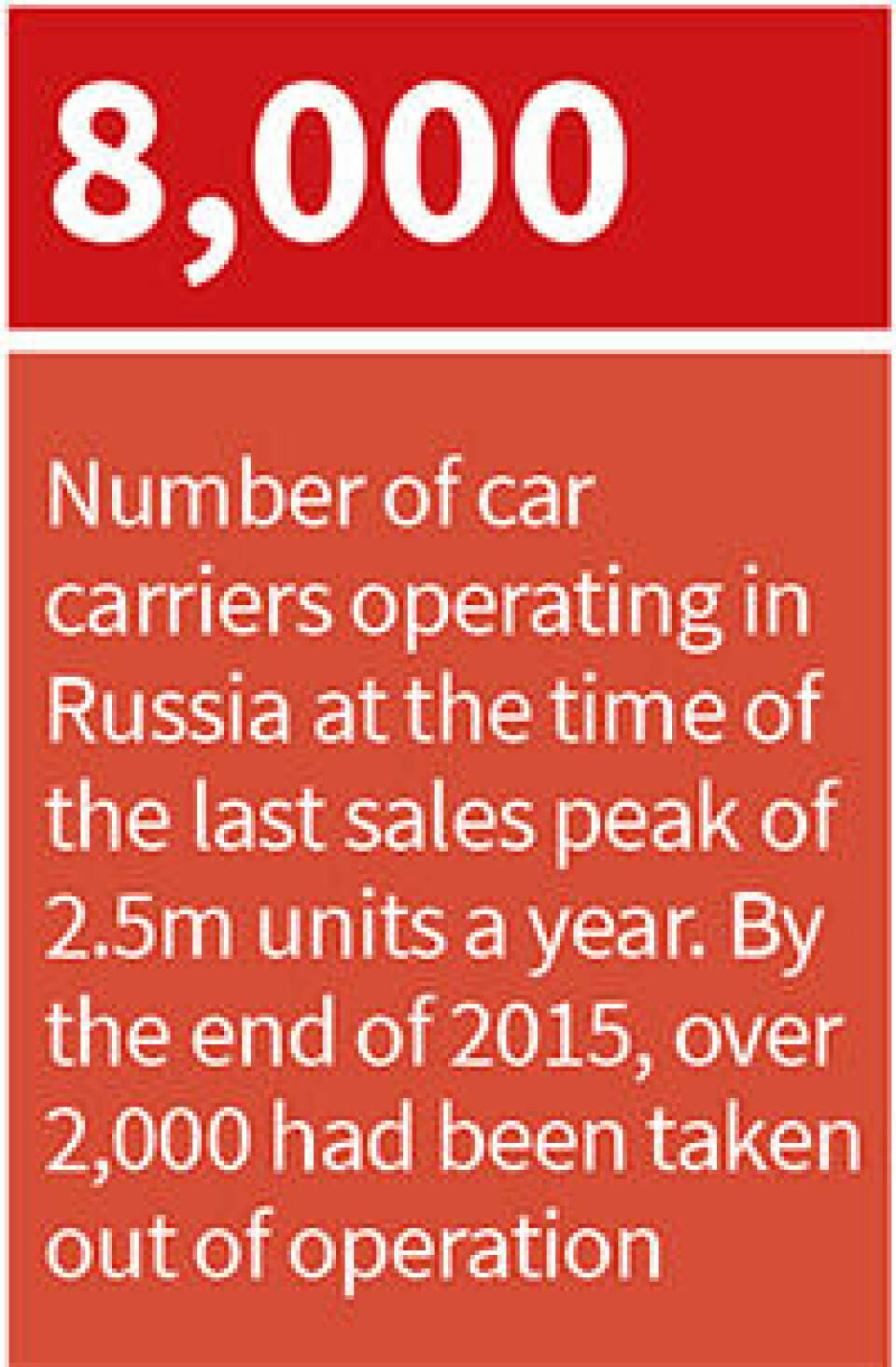
The upward trend in the use of rail is obvious, agrees Olga Stepanova, sales director of Russian Railways subsidiary RZD Logistics. “It is clear that rail has managed to overcome the passivism of the market and prove the stability, quality and warranty of its services. These include precise delivery times, high cargo safety and regular shipments.”
Stepanova adds that the price for finished vehicle delivery by rail is also less volatile than with other modes of transport.
However, ageing fleets are a problem in the rail sector, too. “The share of new wagons in the operating fleet is rather small – a significant proportion of them are old,” says Gerasimova of Lorus SCM. “We have witnessed the withdrawal of some wagons from the industry and expect this trend to continue, unfortunately without their replacement.”
In general, around 16-19% of finished vehicles in Russia are transported by rail, according to Russian company, Rail Trans Auto. The share of rail in finished vehicle transport in the country shrank during the economic crisis, as the size of average shipment fell, the company suggests – but it adds that the ongoing rise in vehicle sales should also lead to a recovery for rail.
Can you give an overview of the automotive market in Kazakhstan?
Our company has been operating in Kazakhstan’s automotive logistics sector since 2009. The market hit the bottom in 2015, when there was a strong slump in vehicle sales.
Now we see this gradually recovering, with a rise in inbound finished vehicle logistics and a growing number of finished vehicles assembled in Kazakhstan, under Hyundai, SsangYong, Toyota, FAW and other brands. They are produced at two assembly plants: Sariarka Avto Prom, in the city of Kostanai; and Asia Avto, in the city of Ust-Kamenogorsk.
According to official statistics – though we do not fully trust them – localised finished vehicles accounted for 50% of total sales in the country in 2018. The rest are imported primarily by OEMs from their Russian assembly plants.
How would you describe the present situation in the finished vehicle logistics sector?
NYK Auto Logistics runs a terminal in Kazakhstan and we account for almost 100% of finished vehicle supply by rail in the country. We also transport finished vehicles throughout the country by road. When it comes to automotive carriers, the fleet in Kazakhstan is very old, with the exception of those run by transport company Unica – they operate 15 FAW trucks, all two to three years old.
Given the anticipated increase in fuel prices, and the fact that this trend is expected to continue at least to the end of the first quarter of 2019, transport companies will continue to bear increased costs. They have absolutely no ability to raise rates for finished vehicle transport, because at the moment, this would just cause a collapse in the automotive logistics industry in the country.
Do you expect the ageing fleet in the sector to be renewed in coming years?
The fleet is getting older. The biggest carriers in Kazakhstan are Asia Car and Unica. It feels like most companies in the industry have no option to modernise their fleets, because tariffs for finished vehicle transport in this market have been flat for the last year and a half.
On the other hand, the biggest customer in the country, Toyota Motor Kazakhstan, is applying European business practices, supporting companies including Unica so they can make ends meet.
They are also supporting our terminal, in which we handle only finished vehicles, and give us [decent] cargo flows, so we can operate with bigger quantities and higher profitability. They try to avoid giving work to other companies on the side. Despite this, there is a shortage of trucks on the market and we think severe problems with carrying capacity could be seen in the industry in the next 18 months.
In your opinion, where do the best prospects for Kazakhstan’s automotive logistics industry lie?
In the past few years, Kazakhstan’s government has actively promoted the One Belt, One Road project – the new Silk Road from Asia to Europe.
We at NYK Auto Logistics are also participating in this project, and have designed some schemes for finished vehicle deliveries for Toyota. This is about a new route, which is slightly more expensive than the conventional transport corridor through the Suez Canal, but could allow the timing to be reduced to a month, or even three weeks.
We have estimated that the logistics spend involved would be 10% higher per finished vehicle, but the time matters – three weeks is much better than eight weeks. In addition, if we could raise flows on this route to some big enough figures, we believe the Chinese government might provide some logistics subsidies. On this route, the cost of inland logistics in China makes up 50% of the total, or around $1,400 per finished vehicle – and they could subsidise up to 30% of that.
